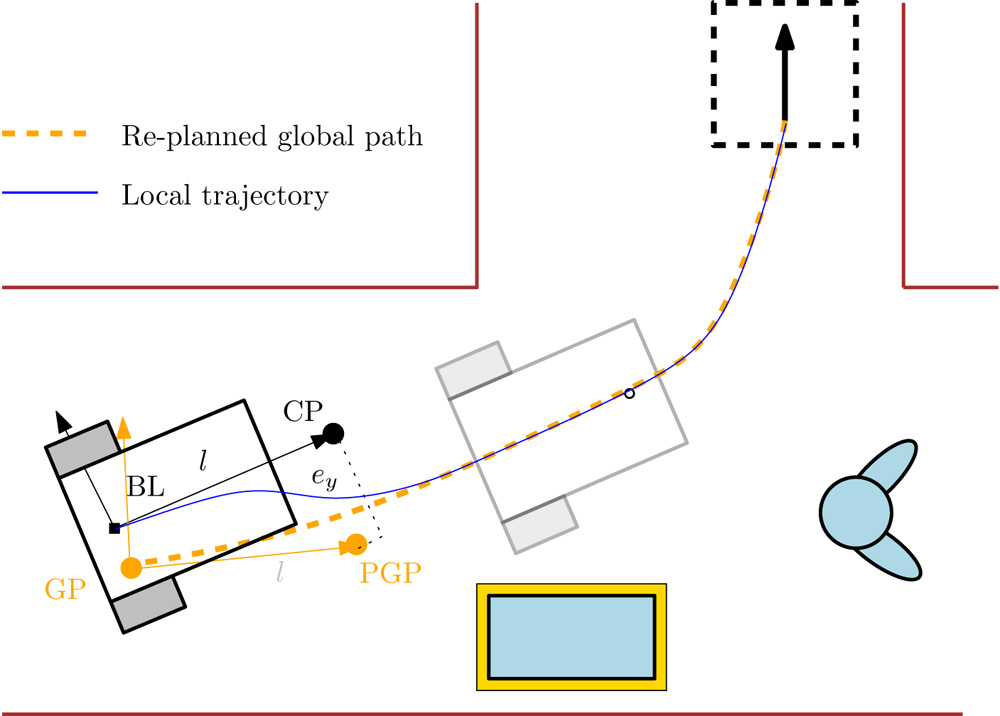Imagine a world where robots seamlessly navigate complex environments, effortlessly avoiding obstacles and reaching their destinations with precision. This vision, once confined to the realm of science fiction, is becoming increasingly attainable thanks to advancements in robot motion planning (RMP).

RMP is a crucial aspect of robotics that focuses on devising optimal paths for robots to move from a starting point to a goal position while adhering to constraints and avoiding collisions. This fundamental problem lies at the heart of robotics applications ranging from autonomous vehicles and logistics automation to surgical robots and exploration in hazardous environments.
The Pillars of Robot Motion Planning:
At its core, RMP involves solving a complex optimization problem.
Configuration Space: The robot’s possible poses (position and orientation) form a representation known as the configuration space.
Obstacles: The environment’s physical limitations, depicted as obstacles within the configuration space, impose constraints on the robot’s movement.
Path Generation: Algorithms strive to find a collision-free trajectory, a path in the configuration space that connects the start and goal positions while respecting the obstacles and robot’s physical limitations.
Algorithmic Approaches:
A wide array of algorithms have been developed to tackle the challenges of RMP.
Classical Techniques:
- Waypoint Navigation: The robot moves sequentially through a series of predefined waypoints, avoiding obstacles along the way.
- Potential Field Methods: The robot navigates by interacting with virtual fields representing attractive forces towards the goal and repulsive forces from obstacles.
- Rapidly-exploring Random Trees (RRT): RRT-based algorithms build a probabilistic roadmap of the configuration space by randomly sampling points and connecting them with feasible paths.
- Artificial Potential Field: This method uses a potential energy landscape, where the robot seeks to minimize its potential energy while avoiding energy "barriers" representing obstacles.
Advanced Techniques:
- Graph-based Methods: Represent the environment as a graph, where nodes are locations and edges are traversable paths, enabling efficient pathfinding.
- Deterministic Planners (PDDL): Utilize formal logic and planning techniques to generate detailed plans for complex tasks involving multiple robots or dynamic environments.
- Machine Learning Methods: Leveraging data-driven approaches to learn motion patterns and optimize paths based on past experiences.
Challenges and Future Directions:
Despite significant progress, RMP faces several ongoing challenges.
- High Dimensionality: As robots become more complex, the configuration space grows exponentially, making pathfinding increasingly difficult.
- Real-time Performance: Many applications demand real-time motion planning, requiring efficient algorithms that can quickly generate feasible paths.
- Dynamic Environments: Handling unpredictable changes in the environment, such as moving obstacles or unexpected events, remains a complex problem.
- Safety and Robustness: Ensuring robot safety and reliability in complex and dynamic environments is paramount.
Future research focuses on addressing these challenges through:
- Efficient and Scalable Algorithms: Exploring novel algorithms that can handle high-dimensional configuration spaces and dynamic environments efficiently.
- Learning-based Motion Planning: Developing data-driven methods that learn from experience and adapt to new environments.
- Integration with Sensory Feedback: Incorporating sensory information from cameras, lidar, and other sensors to improve path planning accuracy and robustness.
- Human-Robot Collaboration: Designing RMP algorithms that facilitate safe and intuitive interactions between robots and humans.
FAQs:
1. What is the difference between motion planning and path planning?
- Motion planning encompasses the entire process of determining a sequence of robot movements, considering factors like joint angles, velocities, and accelerations.
- Path planning focuses primarily on finding a collision-free trajectory in configuration space, without specifying the robot’s precise movements.
2. How do robots avoid collisions during motion planning?
- Various techniques are employed, including:
- Obstacle avoidance functions
- Collision detection algorithms
- Maintaining a safety distance from obstacles
3. What are the typical applications of robot motion planning?
- Autonomous navigation (vehicles, drones)
- Warehouse and logistics automation
- Industrial robotics (assembly, manufacturing)
- Search and rescue operations
- Surgical robotics
Conclusion:
Robot motion planning has emerged as a cornerstone of modern robotics, enabling robots to interact with their environment in increasingly sophisticated ways.
From exploring hazardous terrains to performing delicate surgeries, RMP empowers robots to navigate complex challenges and automate tasks with precision and efficiency. As research continues to push the boundaries of this field, we can expect to see even more innovative applications of RMP, further blurring the lines between science fiction and reality.
Closure
Thus, we hope this article has provided valuable insights into Navigating the Unknowns: A Deep Dive into Robot Motion Planning. We hope you find this article informative and beneficial. See you in our next article!
